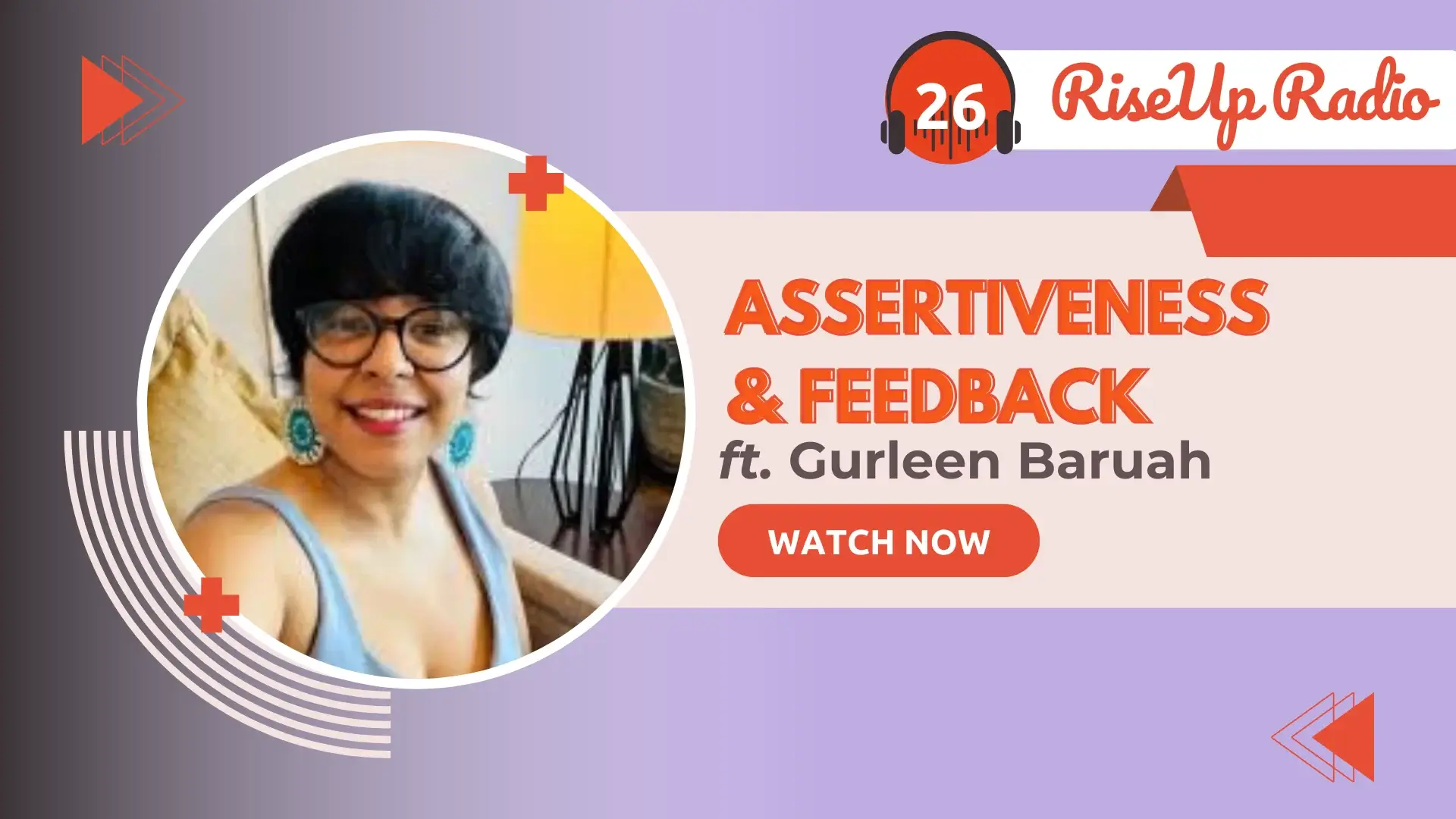10+ Negative Constructive Feedback Examples to Use at Work
Picture this: you watch a teammate struggling with a project, and you know exactly how to help. But the thought of giving critical feedback makes you cringe. You worry about hurting their feelings or stifling their creativity. Here’s the truth: constructive feedback, even the “negative” kind, is a gift, not a punishment. It’s the secret sauce that fuels growth and propels teams towards success. The problem? Many managers shy away from it, fearing negativity or confrontation. But let’s ditch the outdated “feedback sandwich” approach. In this blog, we’ll show you how to deliver constructive criticism with confidence, clarity, and, most importantly, with the goal of helping your team members reach their full potential. We’ll even explore ten powerful examples you can adapt to different situations. So, ditch the fear and embrace the power of constructive feedback – it’s the key to unlocking a culture of continuous learning and growth for you and your team!- 10+ Negative Constructive Feedback Examples to Use at Work
- What is Negative Constructive Feedback?
- Why should you give Negative Constructive Feedback?
- How to Give Negative Constructive Feedback? With Examples of Negative Constructive Feedback for Managers
- Tips to Give Negative Constructive Feedback Effectively
- How to test your Constructive Feedback Skills?
- Conclusion
- Other Related Blogs
What is Negative Constructive Feedback?
Negative constructive feedback is feedback that is constructive in the sense that it helps to improve the quality of work or performance of an individual but also contains critical comments about the performer’s performance. It highlights what the team member missed and what they need to do better next time. While the function is vital, negative constructive feedback can severely hurt the team manager if the manager is not considerate of their perspective while providing it. Negative constructive feedback should be specific and objective. It should not be inflammatory or personal but should focus on specific behaviors or results and any negative impact this may have on the team or organization. It should also be given similarly to positive, constructive feedback, with the added benefit of reinforcing positive behavior and improving overall morale. Both types of feedback are essential for effectively managing employee morale, performance, and development. Let’s understand with an example of negative constructive feedback:- Negative Constructive Feedback:
- Example: “Your presentation was good, but I think you could make it even better by adding more visuals and simplifying the language. This would help the audience understand the content more easily.”
- Criticism:
- Example: “Your presentation was terrible. It was boring, and I couldn’t follow what you were saying at all.”
Why should you give Negative Constructive Feedback?
- Helps team members understand mistakes: It helps individuals understand and acknowledge their mistakes, which can lead to greater self-awareness and increased confidence. From the next time onwards, the team members will know which parts are making their case weak, and they will switch to more efficient habits, leading to personal growth.
- Earmarks areas for growth: Negative constructive feedback can be used to highlight the areas for concentrating development efforts. It assists in developing problem-solving skills as employees learn how to identify and solve problems independently.
- Builds relationship: It encourages honest and open communication between employees and managers, which is critical for effective team management. In turn, the employees would be encouraged to present negative feedback to their manager without hesitating.
- Turns managers into mentors: Managers who proactively offer negative constructive feedback build positive relationships with their team members. As a result, the team members would be more likely to confide in their manager and seek their advice for future challenges or development needs. In addition to feedback, managers can further guide and train the team members, creating a helpful coaching relationship.

How to Give Negative Constructive Feedback? With Examples of Negative Constructive Feedback for Managers
Explain the mistake and highlight the solution
“While your presentation had some strong points, I noticed that you needed to fully address the primary objective outlined in the prompt. Additionally, your use of data could have been more organized and made it easier for the audience to understand the main takeaways. Next time, spend more time clearly outlining your main points and organizing your data in a more easily understandable format. “You have a lot of potentials, but I noticed you do not consistently meet your deadlines. To improve, I suggest you work on time management and set clear goals for yourself.” Wondering how to do it yourself? Check out examples of time management goals for managers here.Offer useful comments
“The report you submitted had some good information but needed a clear structure and organization. I suggest you work on outlining your thoughts and presenting them in a logical order.” “Your work on the project was solid, but I noticed that you needed to take the initiative on some tasks. To improve, I suggest you take on more leadership roles and actively seek opportunities to contribute.”Add some appreciation too!
“I appreciate your effort into the project, but the final product didn’t meet our discussed standards. To improve, pay more attention to the details and double-check your work before submitting it. “Your customer service skills are strong, but I noticed that you tend to interrupt customers while they speak. To improve, I suggest you practice active listening and wait for customers to finish before responding.”Guide their learning
“Your writing skills are quite good, but your grammar needs improvement. I suggest you spend more time reviewing grammar rules and proofreading your work.” “I can see that you are trying hard, but your performance is not meeting the expectations. To improve, I suggest you seek more training and resources to help you reach your goals.”Provide comments with examples
“You have a lot of good ideas, but I noticed that you tend to speak too quickly during meetings and not give others a chance to contribute. To improve, practice speaking more slowly and make sure everyone has an opportunity to talk. “You have a good understanding of the subject, but I noticed you struggle to communicate your ideas. To improve, practice explaining your concepts in simple terms and using examples to illustrate your points.Some more examples of negative constructive feedback are…
“I noticed that you were late for our meeting yesterday. Punctuality is important, and I need to be able to rely on you to be on time. Can we discuss what steps you can take to ensure that you arrive on time in the future?” “Your presentation was informative, but I think you could have engaged the audience more. Next time, try to use more examples or anecdotes to help illustrate your points and make the presentation more interesting.” “Your work on this project was good, but I noticed a few errors in the final report. Please take the time to review your work before submitting it to make sure it’s error-free.” “I appreciate your enthusiasm, but I need you to be more mindful of your tone when speaking to your colleagues. Let’s work together to find a way to communicate your ideas effectively without coming across as dismissive or confrontational.” “I noticed that you didn’t follow the project timeline we discussed. It’s important to stay on track to meet our goals and deadlines. Let’s review the timeline together and come up with a plan to get back on track.”Other Interesting Reads
Tips to Give Negative Constructive Feedback Effectively
- Be constructive and honest – feedback should be given constructively to help the person improve.
- Start with positive feedback – complimenting the person on their efforts, then give specific feedback about what needs improvement. Mix both to create a feedback sandwich.
- Keep criticism focused on what was done rather than personal characteristics or beliefs – it is important not to attack the person’s character or personality.
- It is essential to be patient while waiting for employees to improve their performance, as this process may take some time.
- Make sure the person understands why you are giving feedback and the expected outcome. When providing feedback, ensure the message is clear and concise, so the person knows what is expected of them and why it is necessary.
- Give specific, concrete examples of how the person can improve. Use positive reinforcement for feedback by saying “great job” or “thank you” when giving feedback. This shows the person that you are positive and appreciative of their efforts.
How to test your Constructive Feedback Skills?
Constructive feedback is essential for managers who want to see their teams win. Not only does it allow everyone to improve, but it also helps the manager guide their team into a growth mindset. To ensure you are prepared to do the right job for your team, take the free Constructive Feedback self-assessment from Risely! Risely’s free Constructive Feedback self-assessment for managers identifies the strong and weak parts of your skills to equip you for growth. After taking the assessment, you can see areas that limit your potential and improve your constructive feedback skills with real-time support from Risely at a leisurely pace.Conclusion
Negative constructive feedback is an invaluable way of communicating with your team members and helping them improve their work. It allows you to express your concerns and feedback in a constructive way that the team member can understand easily. A negative constructive feedback example is an excellent way of demonstrating how feedback might sound and what it might look like. Remember that negative feedback doesn’t have to be negative. They can be the most significant positive for your team when used well. Revisit Risely for more helpful tips on leadership.Achieve more with the free Constructive Feedback toolkit!
Grab a free toolkit today to know the do’s and don’ts of effective feedback sessions
Other Related Blogs
Assertive Feedback Techniques ft. Gurleen Baruah
Assertive Feedback Techniques ft. Gurleen Baruah Let’s be real—giving feedback as a manager isn’t always easy. Say too little, and nothing changes. Say too much, and it might come off…
How to ask for feedback from employees? | Gurleen Baruah
How to ask for feedback from employees? | Gurleen Baruah Feedback is a two way street. This podcast took managers on a trip down the other side. As managers, we…
How to give a constructive feedback? | Gurleen Baruah
How to give a constructive feedback? | Gurleen Baruah Giving constructive feedback to help the team achieve more is one of the primary tasks of a manager. But, without the…
Let’s Reverse the Gaze of Radical Candor?
Let’s Reverse the Gaze of Radical Candor? Have you heard about Radical Candor? It’s a book by Kim Scott that first came out in 2017. The tagline is “Caring Personally…


